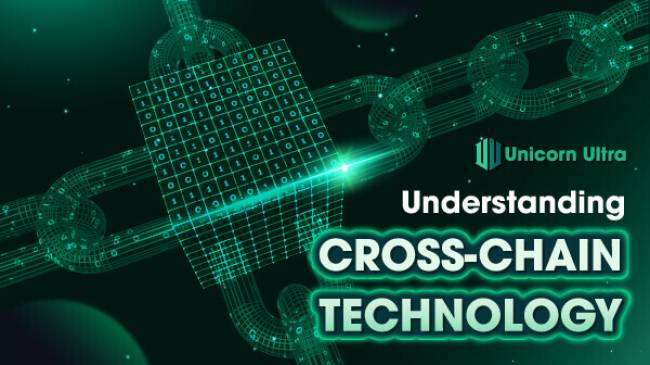Table of Contents
What is Cross-Chain?
Cross-chain is a technical concept that involves linking two or more entirely independent blockchains. This enables the transfer of information and data, including digital assets, between blockchains that would otherwise remain isolated from each other.

Cross-chain technology eliminates the necessity for trusted third-party intermediaries and plays a crucial role in achieving blockchain interoperability, which is the capability to transfer assets and information across different blockchains. This interoperability is expected to drive greater adoption of Web3 technology.
Cross-chain technology offers a wide range of applications, including asset transfers facilitated by cross-chain bridges, cross-chain oracles, and the execution of cross-chain smart contracts.
Why do we need cross-chains?
As the adoption of blockchain technology continues to grow and the interconnectedness of blockchains becomes increasingly evident, the limitations of isolated blockchains highlight the absolute necessity for seamless and secure cross-chain solutions in shaping the future of web3.
Cross-chain technology holds significant importance because it eliminates the need for custodial entities, such as centralized exchanges, that would otherwise be required when transferring assets or data across diverse blockchain protocols. Many cross-chain technologies are designed to be non-custodial and trustless, granting users full control and ownership of their assets and data at all times. This approach promotes interoperability between blockchains in a more secure and decentralized manner. Additionally, there are several custodial or trusted cross-chain technologies that prioritize convenience and usability, albeit to a slightly higher degree than decentralization and security.
The potential of cross-chain technology cannot be underestimated, especially as asset tokenization gains popularity. Cross-chain bridges will play a pivotal role in people's financial interactions, akin to transactions between traditional banks, as tokenization enables the emergence of new digital assets such as stock shares and fractionalized real estate.
Furthermore, the growth of DeFi (Decentralized Finance) ecosystems heavily relies on cross-chain technology, as it serves as a central enabler for token swaps and data transfers between various blockchains.
It is also worth noting that cross-chain technology enhances blockchain efficiency and fosters more fluid communication among users across different blockchain networks.
Cross-Chain's Structure
At its core, cross-chain technology operates through a combination of protocols and middleware that facilitate communication between different blockchains. These protocols establish a standardized way for chains to communicate, ensuring compatibility and security. Interoperability can be achieved through methods like sidechains, wrapped tokens, and specialized bridges, each designed to serve specific purposes.
Mechanism of Cross-Chain Operation
Cross-chain operation involves a series of steps to ensure secure and transparent asset transfer. The process typically includes locking the asset on one blockchain, verifying the transaction, and minting a corresponding asset on the target blockchain. This ensures that the asset's value remains intact throughout the transfer. Complex cryptographic techniques and consensus algorithms underpin these mechanisms, guaranteeing the integrity of the entire process.
A practical use case for Cross-Chain

One compelling application of cross-chain technology is in the realm of decentralized exchanges (DEXs). These platforms enable users to trade assets without the need for a centralized intermediary. By integrating cross-chain capabilities, DEXs can offer a broader range of assets for trading, providing users with more options while maintaining the security and transparency inherent to blockchain technology.
Pros and Cons of Cross-Chain
Advantages:
Enhanced Liquidity: Cross-chain technology enables the pooling of liquidity from multiple chains, deepening the market and reducing price discrepancies.
Asset Diversification: Users gain access to a wider range of assets, leading to improved portfolio diversification.
Scalability Solutions: Cross-chain mechanisms can alleviate the scalability issues faced by individual blockchains.
Disadvantages:
Complexity: Implementing cross-chain technology requires intricate protocols and mechanisms, contributing to complexity.
Security Concerns: Interoperability introduces potential vulnerabilities that need to be carefully addressed to prevent malicious activities.
Centralization Risks: Some cross-chain solutions might rely on centralized intermediaries, compromising the decentralized nature of blockchain.
Several prominent cross-chain projects

Polkadot: Designed to enable different blockchains to interoperate, Polkadot uses a relay chain to connect various parachains, fostering cross-chain communication and asset transfers.
Cosmos: With its Inter-Blockchain Communication (IBC) protocol, Cosmos allows independent blockchains to exchange value and data seamlessly.
Wanchain: Utilizing secure multiparty computing, Wanchain enables cross-chain transactions without revealing sensitive information.
Conclusion
Cross-chain technology stands as a pivotal advancement in the blockchain ecosystem, addressing the limitations of isolated networks and opening up new possibilities for decentralized applications. As interoperability becomes increasingly crucial for the growth of blockchain, cross-chain solutions will continue to evolve, unlocking seamless transactions and fostering innovation across the digital landscape.
While challenges remain, the potential benefits of cross-chain technology are undeniable, promising a future where disparate blockchain networks seamlessly collaborate to reshape the way we transact and interact with digital assets.
Hopefully, this article on What is Cross-Chain will be helpful to you. Please subscribe to stay updated with us.






